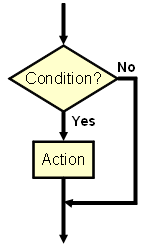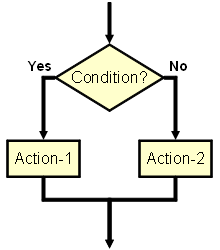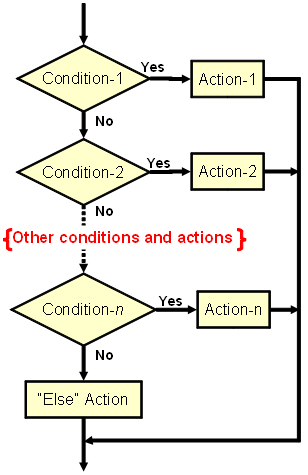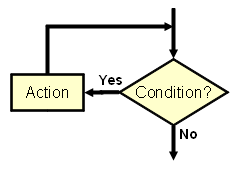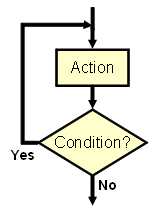ReNamer:Pascal Script:Quick guide: Difference between revisions
No edit summary |
(Replaced 'prettytable' with 'wikitable' style.) |
||
| (9 intermediate revisions by 3 users not shown) | |||
| Line 1: | Line 1: | ||
{{Up|ReNamer:Pascal Script}} | |||
If you are not familiar with Pascal Scripting, first go through the excellent [http://www.taoyue.com/tutorials/pascal/contents.html tutorial] written by '''Tao Yue'''. | If you are not familiar with Pascal Scripting, first go through the excellent [http://www.taoyue.com/tutorials/pascal/contents.html tutorial] written by '''Tao Yue'''. | ||
| Line 7: | Line 9: | ||
The structure of a basic script is as follows (keywords are shown in ALLCAPS bold): | The structure of a basic script is as follows (keywords are shown in ALLCAPS bold): | ||
< | <div style="border:1px dashed gray; background-color:#eff; display:inline-block; padding: 1em 2em"> | ||
'''CONST''' | '''CONST''' | ||
| Line 27: | Line 27: | ||
'''END.''' | '''END.''' | ||
</div> | |||
</ | |||
Note that: | Note that: | ||
| Line 47: | Line 46: | ||
These structures are used to execute different blocks of code depending upon a condition. | These structures are used to execute different blocks of code depending upon a condition. | ||
{| class=" | {| class="wikitable" | ||
|- | |- | ||
! Branching structure | ! Branching structure | ||
| Line 54: | Line 53: | ||
! Remarks | ! Remarks | ||
|- | |- | ||
! | ! if-then | ||
| | | | ||
<pre>if <Condition> then | <pre>if <Condition> then | ||
| Line 66: | Line 65: | ||
|- | |- | ||
! | ! if-then-else | ||
| | | | ||
<pre>if <Condition> then | <pre>if <Condition> then | ||
| Line 78: | Line 77: | ||
| [[Image:PascalScriptIfThenElse.png|center]] | | [[Image:PascalScriptIfThenElse.png|center]] | ||
| | | | ||
Two alternative actions are provided. | Two alternative actions are provided. | ||
If '''<Condition>''' is met, execute '''<Action-1>'''. Otherwise execute '''<Action-2>'''. | If '''<Condition>''' is met, execute '''<Action-1>'''. Otherwise execute '''<Action-2>'''. | ||
Thus one of these two '''<Actions>''' are definitely executed. | Thus one of these two '''<Actions>''' are definitely executed. | ||
After execution of the action, pass on the control to the next statement. | After execution of the action, pass on the control to the next statement. | ||
|- | |- | ||
! case/switch | ! case/switch | ||
| | | | ||
<pre>case X of | <pre>case X of | ||
1: | 1: | ||
begin | begin | ||
<Action-1> | <Action-1> | ||
end; | end; | ||
2: | 2: | ||
begin | begin | ||
<Action-2> | <Action-2> | ||
end; | end; | ||
else | else | ||
| Line 105: | Line 101: | ||
<Default Action> | <Default Action> | ||
end; | end; | ||
end;</pre> | end;</pre> | ||
| [[Image:PascalScriptCase.png|center]] | | [[Image:PascalScriptCase.png|center]] | ||
| Line 114: | Line 110: | ||
*One and only one '''<Action>''' is executed. After that, the control passes on to the next statement. (It does <u>not</u> check for the next condition.) | *One and only one '''<Action>''' is executed. After that, the control passes on to the next statement. (It does <u>not</u> check for the next condition.) | ||
*The conditions are checked in the "top down" order. So even if the other conditions are also met, their '''<Actions>''' will never be executed. | *The conditions are checked in the "top down" order. So even if the other conditions are also met, their '''<Actions>''' will never be executed. | ||
*The code structure can optionally have a ''' | *The code structure can optionally have a '''<Default Action>'''. It is executed if (and only if-) none of the conditions are met. | ||
This is a generalized version of the '''if-then-else''' block (above). | |||
This is | |||
|} | |} | ||
| Line 153: | Line 120: | ||
Loops are used to execute a block of code iteratively till a certain condition is met. | Loops are used to execute a block of code iteratively till a certain condition is met. | ||
{| class=" | {| class="wikitable" | ||
|- | |- | ||
! Loops | ! Loops | ||
| Line 213: | Line 180: | ||
Typically, it is used as the '''<Action>''' statement in a '''if-then''' block. This block is then embedded (nested) inside the other code block, just before the statements that are to be skipped in the current iteration. | Typically, it is used as the '''<Action>''' statement in a '''if-then''' block. This block is then embedded (nested) inside the other code block, just before the statements that are to be skipped in the current iteration. | ||
|} | |||
| | === Control === | ||
{| class="wikitable" | |||
! Exit | ! Exit | ||
| <pre>Exit;</pre> | | <pre>Exit;</pre> | ||
<u>'''OR'''</u> | <u>'''OR'''</u> | ||
<pre>if <Condition> then Exit;</pre> | <pre>if <Condition> then Exit;</pre> | ||
| | |||
The '''Exit''' procedure abruptly terminates the current function or procedure. If exiting a function, then ''Result'' contains the last set value. | |||
'''Warning:''' use with caution - jumping is a concept at odds with structured coding - it makes code maintenance difficult.<br> | |||
|} | |} | ||
[[Category:ReNamer]] | |||
Latest revision as of 14:31, 11 November 2015
If you are not familiar with Pascal Scripting, first go through the excellent tutorial written by Tao Yue.
The following is a short overview of Pascal Script.
Basic pascal script
The structure of a basic script is as follows (keywords are shown in ALLCAPS bold):
CONST
- <Constant declarations>
TYPE
- <Type declarations>
VAR
- <Variable declarations>
BEGIN
- <Executable statements>
END.
Note that:
- The main code must be within the begin and end. keywords.
- All statements in the script use the semicolon ";" as terminator. Only the last statement (END.) uses a dot as terminator.
Control structures
All the typical control structures (building blocks) occurring in Pascal Script are described in the following table. The table shows a flow chart and Pascal Script code required to implement that logic. To compose your own PascalScript rule, you can simply copy and paste the code and then edit it to finish your script.
In actual implementation, just substitute the following:
- Replace <Condition> with an actual Pascal statement that tests for a condition.
- Replace <Action> with code block that takes action relevant to the condition. There may be several statements.
Branching
These structures are used to execute different blocks of code depending upon a condition.
| Branching structure | Pascal script | Flowchart (Logic) | Remarks |
|---|---|---|---|
| if-then |
if <Condition> then begin <Action> end; |
Execute the <Action> statement only if the <Condition> is met. Otherwise pass on the control to the next statement that follows the <Action>. | |
| if-then-else |
if <Condition> then begin <Action-1> end else begin <Action-2> end; |
Two alternative actions are provided. If <Condition> is met, execute <Action-1>. Otherwise execute <Action-2>. Thus one of these two <Actions> are definitely executed. After execution of the action, pass on the control to the next statement. | |
| case/switch |
case X of
1:
begin
<Action-1>
end;
2:
begin
<Action-2>
end;
else
begin
<Default Action>
end;
end;
|
This is a generalized version of the if-then-else block (above). |
Loops
Loops are used to execute a block of code iteratively till a certain condition is met.
| Loops | Pascal script | Flowchart (Logic) | Remarks |
|---|---|---|---|
| For To Do | for I := X to Y do begin <Action> end; |
Execute the <Action> a certain number of times.
This example shows that the counter is incremented by 1, but it can be any statement that changes the value of the counter vaiable towards the target value. Similarly, the decision block can have any logical expression with the counter. Make sure that the exit condition is reached at some point of time; otherwise the loop will execute endlessly, and ReNamer will appear to be hung. | |
| While Do | while <Condition> do begin <Action> end; |
Check for a condition and if it is met, execute the <Action>.
The loop is repeated till the condition is met. When the condition is not met, the loop is terminated and control passes to the next statement. Note that if the condition fails in the first-ever check, the <Action> may not be executed at all. Make sure that the condition will fail at some point of time; otherwise the loop will execute endlessly, and ReNamer will appear to be hung. Sometimes the condition is set to be always TRUE, and then a statement inside the <Action> block breaks the loop based on a different condition.(See the break command below) | |
| Repeat Until | repeat <Action> until <Condition>; |
This structure is similar to the While loop (see above). However, the only difference is that the <Action> is taken first and then the condition is checked. As a result, the <Action> is executed at least once. | |
| Break | Break; OR if <Condition> then Break; |
This statement is placed in any of the above loops to terminate the loop when a condition is met. Typically, it is used as the <Action> statement in a if-then block. This block is then embedded (nested) inside the other code block that is to be contionally terminated. See the Case block above, which uses the break statement as integral part of its structure. | |
| Continue | Continue; OR if <Condition> then Continue; |
This statement is placed in any of the above loops to jump to the end of the current iteration, bypassing all the subsequent statements within the loop. However, the execution of the loop continues (the next iteration starts). Typically, it is used as the <Action> statement in a if-then block. This block is then embedded (nested) inside the other code block, just before the statements that are to be skipped in the current iteration. | |
Control
| Exit | Exit; OR if <Condition> then Exit; |
The Exit procedure abruptly terminates the current function or procedure. If exiting a function, then Result contains the last set value. Warning: use with caution - jumping is a concept at odds with structured coding - it makes code maintenance difficult. |
|---|
